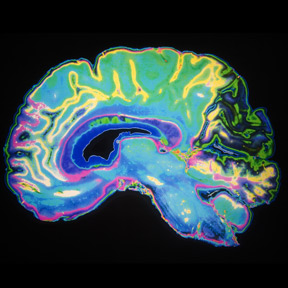Highlights
- •Repeated ketamine anesthesia induces perineuronal net loss
- •PNN loss reinstates juvenile-like ocular dominance plasticity
- •Microglia interact with parvalbumin neurons and remodel PNN
- •60-Hz light stimulation recapitulates ketamine-induced PNN loss
Summary
Perineuronal nets (PNNs), components of the extracellular matrix, preferentially coat parvalbumin-positive interneurons and constrain critical-period plasticity in the adult cerebral cortex. Current strategies to remove PNN are long-lasting, invasive, and trigger neuropsychiatric symptoms. Here, we apply repeated anesthetic ketamine as a method with minimal behavioral effect. We find that this paradigm strongly reduces PNN coating in the healthy adult brain and promotes juvenile-like plasticity. Microglia are critically involved in PNN loss because they engage with parvalbumin-positive neurons in their defined cortical layer. We identify external 60-Hz light-flickering entrainment to recapitulate microglia-mediated PNN removal. Importantly, 40-Hz frequency, which is known to remove amyloid plaques, does not induce PNN loss, suggesting microglia might functionally tune to distinct brain frequencies. Thus, our 60-Hz light-entrainment strategy provides an alternative form of PNN intervention in the healthy adult brain.
Introduction
Sensory processing is established through experience during the critical period of brain development (Hensch, 2005). The end of that phase coincides with increased inhibition from fast-spiking parvalbumin-positive (Pvalb+) neurons and the formation of the perineuronal net (PNN), a defined extracellular matrix (ECM) compartment consisting of chondroitin sulfate proteoglycans and various ECM and cell-adhesion molecules (Ueno et al., 2017a, Ueno et al., 2018b). Approximately 80% of Pvalb+ neurons in the primary somatosensory cortex are coated with PNN (Härtig et al., 1992; Ueno et al., 2018b; Wen et al., 2018). PNN sterically restricts synapse formation and receptor mobility and, thus, prevents adaptation of juvenile plasticity in adulthood (Celio and Blümcke, 1994; Frischknecht and Gundelfinger, 2012; Kuhlman et al., 2013; Lensjø et al., 2017; Pizzorusso et al., 2002). Disruptive environmental interferences during this sensitive period can cause long-lasting circuit impairment resulting in neurological disorders, such as loss of visual acuity (Fong et al., 2016). Enzymatic digestion of the ECM with intracerebral application of chondroitinase ABC can reinstate juvenile-like plasticity in the adult cortex, but the enzyme uncontrollably degrades the ECM for several weeks and is not suitable for therapeutic interventions (Hensch, 2005; Pizzorusso et al., 2002). An alternative approach surfaced in the form of the rapidly acting, dissociative drug ketamine, which preferentially acts on NMDA receptors of cortical inhibitory neurons (Brown et al., 2011; Kaplan et al., 2016; Li and Vlisides, 2016; Picard et al., 2019). Recent studies in rats suggested that repeated exposure of low dosage of ketamine mildly reduces PNN coverage (Kaushik et al., 2020; Matuszko et al., 2017). At the same time, that dosage regime provokes schizophrenia-like phenotypes, limiting its therapeutic use. We decided to circumvent that constraint by applying ketamine at an anesthetic dosage. Ketamine complies with the principles of general anesthesia, which requires a drug-inducible, fully-reversible change of consciousness and cognition (Brown et al., 2011). Mice exposed to repeated anesthetic ketamine showed only minimal effects in their well-being and behavior (Hohlbaum et al., 2018). Furthermore, the application of ketamine at anesthetic dosage achieves the maximum pharmacological response with a consistent phenotypic readout across animals, avoiding the confounding effects of ketamine dosage, frequency, and time interval. This allowed us to address the underlying cellular mechanism involved in PNN reduction, which provides the fundaments to find alternative, non-invasive strategies to modify PNN in the healthy adult brain.Here, we show that repeated ketamine exposure at anesthetic dosage results in massive PNN loss in various cortical brain regions and is sufficient to promote juvenile-like plasticity. We identified microglia, the brain-resident immune cells (Kettenmann et al., 2011), to be critically involved in this process because they engaged with Pvalb+ neurons in a layer-specific manner and subsequently remodeled the PNN coating. Because ketamine exposure influences the gamma frequency (Ahnaou et al., 2017; Castro-Zaballa et al., 2019; Pinault, 2008) and microglia are capable of removing extracellular amyloid-plaque depositions upon stimulation in the gamma range (Iaccarino et al., 2016), we entrained the visual cortex with either low- or high-light-flickering frequencies. At 60 Hz, we recapitulated the same microglia action toward PNN as seen under ketamine. Importantly, this only occurred at 60 Hz and not at 8 or 40 Hz, suggesting an alternative, non-invasive strategy to reduce PNN coverage in the healthy adult cortex.







